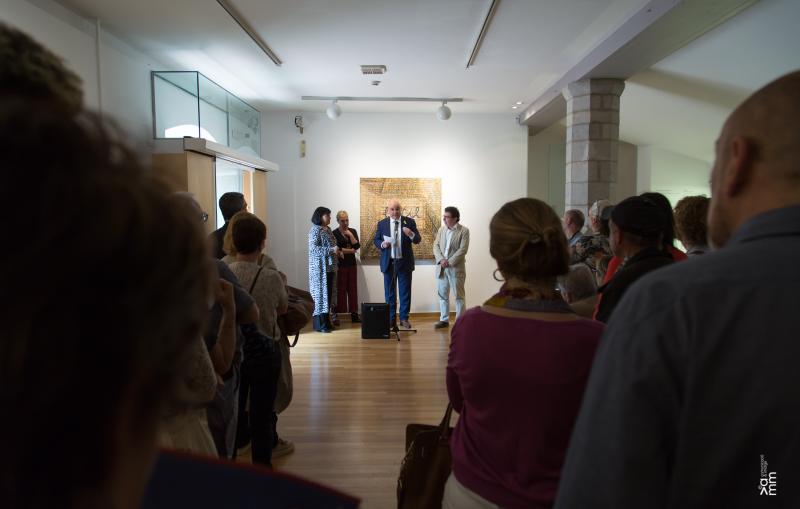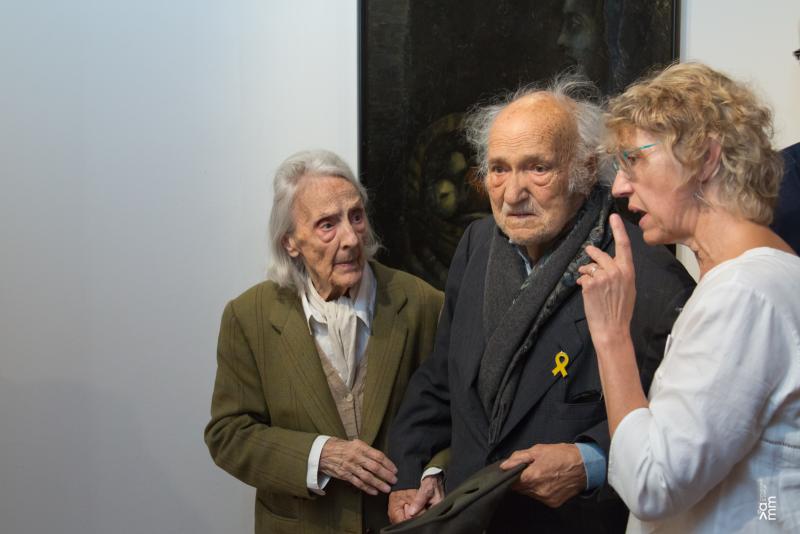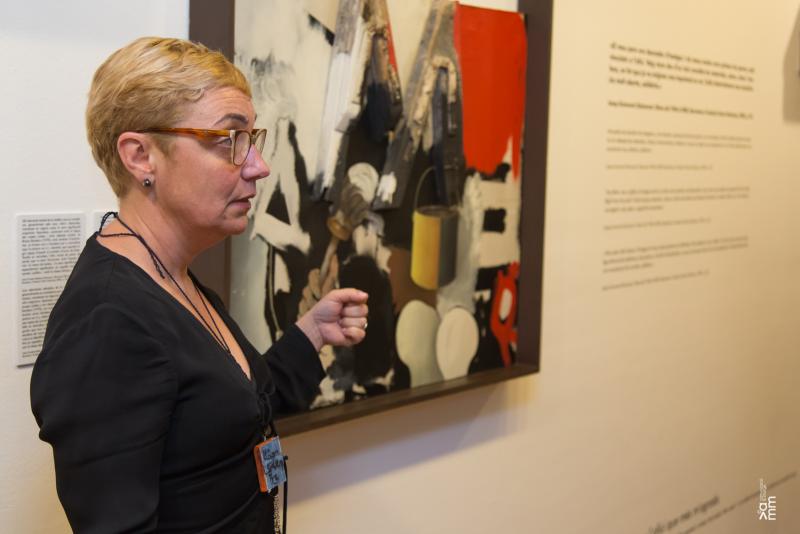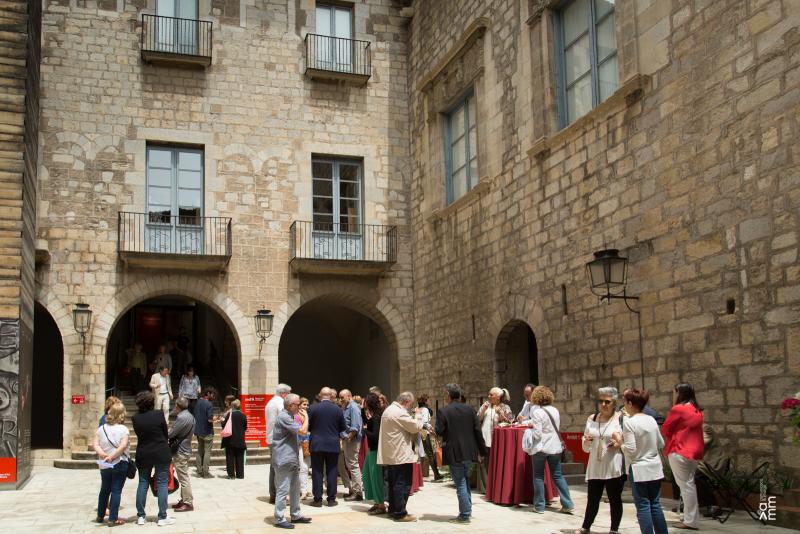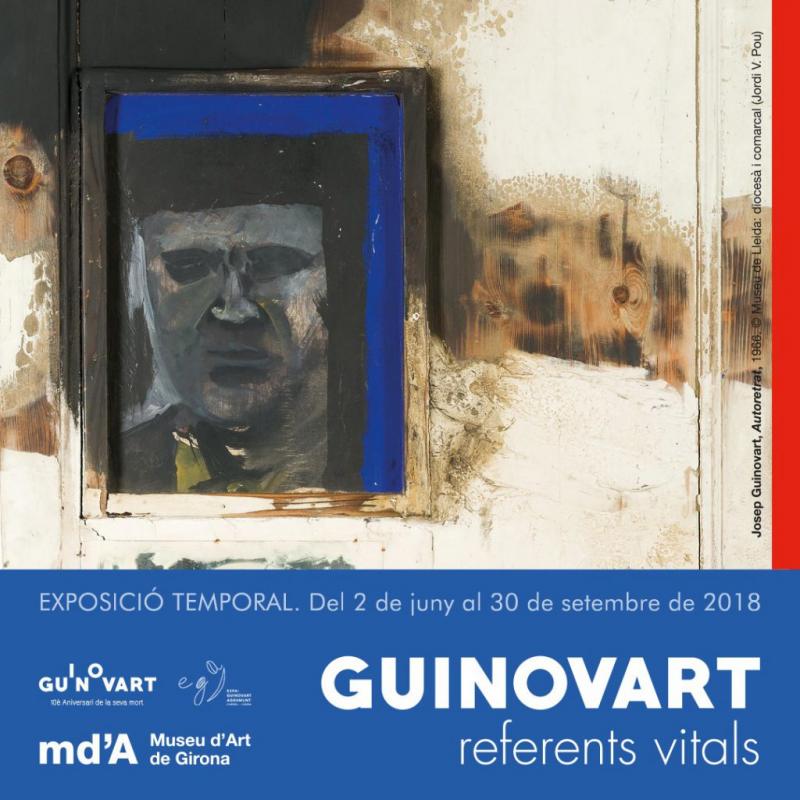"Referents vitals"
Josep Guinovart.
Girona art museum
The discovery of Romanesque art, and especially the paintings of the apses of the churches of the Boí Valley, marked their first works. Guinovart was part of the ephemeral Taüll Group (1955), along with Marc Aleu, Modest Cuixart, Jordi Mercadé, Jaume Muixart, Joan Josep Tharrats and Antoni Tàpies. Then all of them were young artists who wished the transformation of art in Catalonia and would end up, each evolving with their own style, forming the avant-garde of Catalan art from the mid 20th century.
Before that, Guinovart had watched and was imbued with the gypsies of Nonell, the landscapes of Gimeno or Joaquim Mir and the works of Benjamin Palencia. These artists would be the first foundations of his painting: his first paintings in oil, landscapes of Castelldefels or of Agramunt, but also of later works, completely abstract, in which the essence of all of them is distilled .
Great references of Guinovart will be Picasso and also Miró and Dalí with whom he maintained more direct relation. Guinovart, in its constant mutation, will also experience surrealistic iconographies or be inspired by the more Dalinian landscapes such as Cap de Creus, by making his own readings and proposals. He will also enjoy the apparent compositional simplicities of Miró's work or experiment with Picasso's cubist forms. Of all of them and especially of his works, Guinovart will make a reflection and establish very particular dialogues in his constant and endless process of artistic experimentation, almost as homage.
Finally, the exhibition leads to the most typical references, more intrinsically linked to the artist's life and where he recognizes himself: the painter's office, both present in the work Broche Bandera (1970), and his Immediate environments, Castelldefels and Agramunt.
In the exhibition, Guinovart is present at the beginning and the last stages: Guinovart realist, expressionist, magician, mathematician, informalist, abstract ...; but above all it evidences the endless search and constant experimentation with techniques, supports and materials and the permanent dialogue with the tradition and with the funds that directly marked them.
The exhibition closes with the projection of the cantata tribute that Carlos Santos gave him "Gui-no-vart" (2007) interpreted by the Coral d'Avui. A keen eye to the artists who have found in Guinovart and his work a reference, too, of inspiration and new tradition.
As described by Raül Garrigasait in the presentation text of the exhibition (Tradition, 2018): Painters have an advantage over writers: for them, sensuality is not the hypothetical object of art but its premise . From the beginning they operate with the pores full of reality, with the ancient wisdom of the total man, magic, and stuff and word melted. Creating tradition, for them, is to scrub with the places and universes of other artists until they turn on them and watch them glow.

